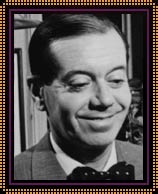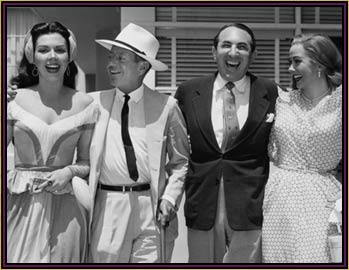 American composer Cole Albert Porter (1891-1964) wrote songs (both words and music) for over 30 stage and film musicals. His best work set standards of sophistication and wit seldom matched in the popular musical theater.
American composer Cole Albert Porter (1891-1964) wrote songs (both words and music) for over 30 stage and film musicals. His best work set standards of sophistication and wit seldom matched in the popular musical theater.
Cole Porter was born in Peru, Indiana, on June 9, 1891, the son of a pharmacist. His mother was as determined that her only son become a creative artist as his wealthy midwestern pioneer grandfather was that he enter business or farming. Kate Cole’s influence proved stronger, and Porter received considerable musical training as a child. By 1901 he had composed a onesong “operetta” entitled “The Song of the Birds”; then he produced a piano piece, “The Bobolink Waltz,” which his mother published in Chicago.
Porter attended Worcester Academy, where he composed the class song of 1909. At Yale (1909-1913) he wrote music and collaborated on lyrics for the scores of several amateur shows presented by his fraternity and the Yale Dramatic Association. Porter then entered Harvard Law School; almost at once, however, he changed his course of study to music. Before leaving Harvard he collaborated on a comic operetta, “See America First” (1916), which became his first show produced on Broadway. It was a complete disaster.
In 1917 Porter was in France, and for some months during 1918-1919 he served in the French Foreign Legion. After this he studied composition briefly with the composer Vincent d’Indy in Paris. Returning to New York, he contributed songs to the Broadway production “Hitchy-Koo of 1919,” his first success, and married the wealthy socialite Linda Lee.
The Porters began a lifetime of traveling on a grand scale; they became famous for their lavish parties and the circle of celebrities in which they moved. Porter contributed songs to various stage shows and films and in 1923 composed a ballet, “Within the Quota,” which was performed in Paris and New York. Songs such as “Let’s Do It” (1928), “What Is This Thing Called Love” (1929), “You Do Something to Me” (1929), and “Love for Sale” (1930) established him as a creator of worldly, witty, occasionally risqué lyrics with unusual melodic lines to match.
Cole Porter
- "Anything Goes"
- "Can-Can"
- "Du Barry Was a Lady"
- "Fifty Million Frenchmen"
- "Gay Divorce"
- "High Society"
- "Jubilee"
- "Kiss Me, Kate"
- "Leave It to Me!"
- "Mexican Hayride"
- "Panama Hattie"
- "Silk Stockings"
- "Red, Hot and Blue"
- "Paris"
- Alfred Drake
- Dorothy Fields
- Moss Hart
- George Kaufman
- Michael Kidd
- Gene Kelly
- Bert Lahr
- Mary Martin
- Ethel Merman
- Chita Rivera
- Gwen Verdon
- Tony Walton
In the 1930s and 1940s Porter provided full scores for a number of bright Broadway and Hollywood productions, among them “Anything Goes” (1934), “Jubilee” (1935), “Rosalie” (1937), “Panama Hattie” (1940), and “Kiss Me, Kate” (1948). These scores and others of the period abound with his characteristic songs: “Night and Day,” “I Get a Kick out of You,” “You’re the Top,” “Anything Goes,” “Begin the Beguine,” “Just One of Those Things,” “Don’t Fence Me In,” “In the Still of the Night,” and “So in Love.”
Serious injuries in a riding accident in 1937 plagued Porter for the remainder of his life. A series of operations led, in 1958, to the amputation of his right leg. In his last years he produced one big Broadway success (“Can-Can,” 1953). He died on October 15, 1964, in Santa Monica, California.
Porter’s songs show an elegance of expression and a cool detachment that seem to epitomize a kind of sophistication peculiar to the 1930s. He was also an authentically talented creator of original melodies. Like George Gershwin, he frequently disregarded the accepted formulas of the conventional popular song (usually a rigid 32-measure framework) and turned out pieces of charm and distinction.
Source: Excerpted from ENCYCLOPEDIA OF WORLD BIOGRAPHY, 2ND ED. 17 VOLS., Gale Research, © 1998 Gale Research. Reprinted by permission of The Gale Group.
Photo credits: Photofest and the Cole Porter Trust


